Eleanor Roosevelt’s Many Dogs: Unofficial First Dogs
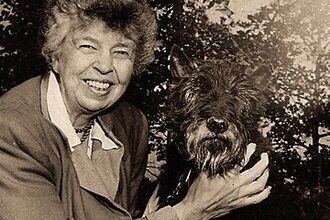
Eleanor Roosevelt, the wife of President Franklin D. Roosevelt and an influential figure in her own right, was known for her deep compassion for both people and animals. While she was often seen advocating for human rights and social justice, Eleanor’s love for dogs also became an important aspect of her public persona. Over the years, Eleanor owned many dogs, each of whom played a special role in her life. Among her pets was a Scottish Terrier named “Fala,” who became particularly famous as the unofficial First Dog during her husband’s presidency.
Fala’s presence in the Roosevelt household became iconic, and Eleanor often spoke fondly of the dog in her letters and speeches. In fact, Fala’s status as a celebrity pet even transcended American borders, as the dog was famously featured in press coverage during the 1944 campaign. It was reported that Fala would often accompany Eleanor on her travels, and the bond between the two was so strong that when Fala passed away, it was a deep emotional loss for her. Fala’s legacy as the First Dog remained, symbolizing the deep connection between Eleanor and her beloved pets.
Teddy Roosevelt’s ‘Rough Riders’ of Pets
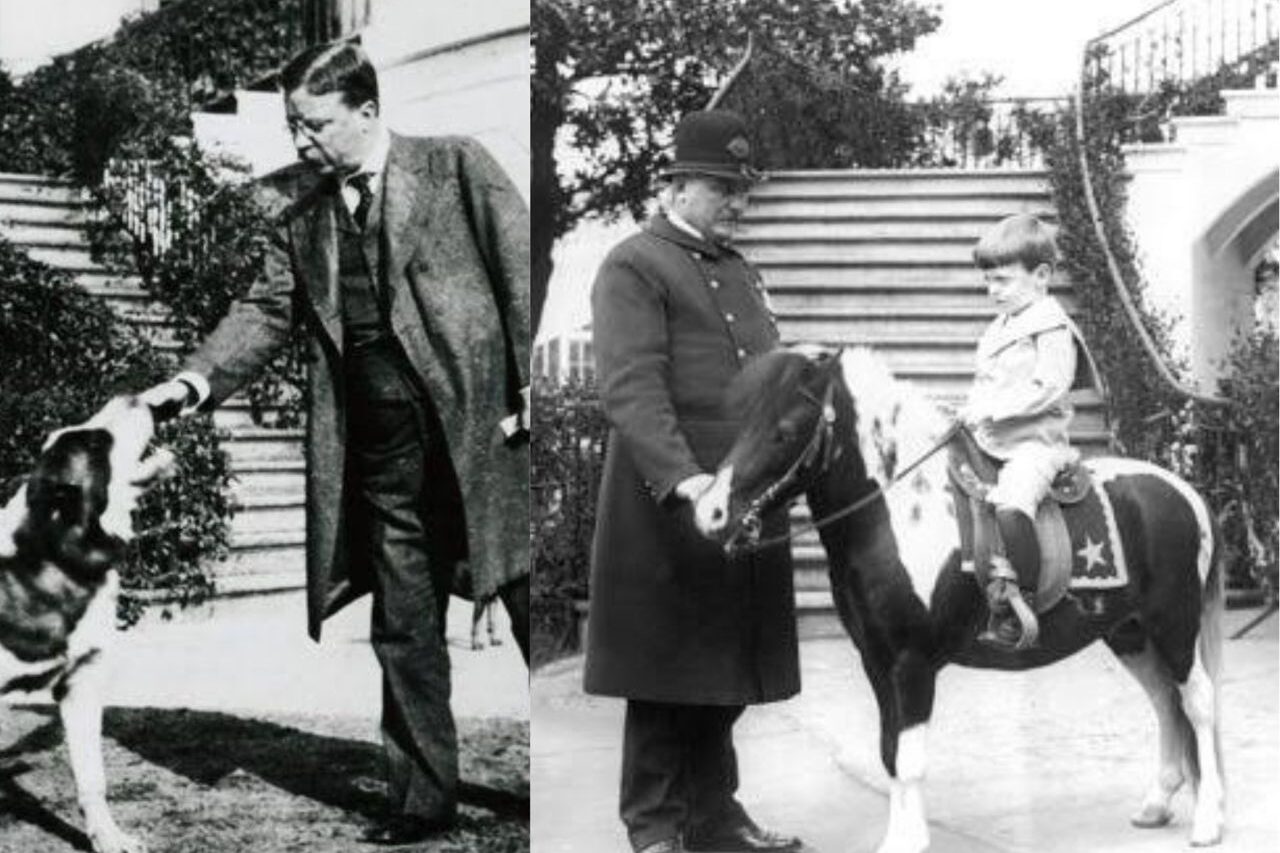
Theodore Roosevelt, the 26th President of the United States, was known for his energetic personality and adventurous spirit. But his affinity for pets often goes unnoticed in discussions about his larger-than-life character. Roosevelt had a variety of animals throughout his life, from dogs to snakes, and even a lion. His most famous pet, however, was a snake named Emily Spinach. While the idea of a politician keeping a pet snake may seem unusual, Roosevelt’s love for unconventional pets reflected his rugged individualism and love for nature.
Roosevelt’s menagerie wasn’t just confined to his personal life. His pets were often seen at the White House, and they became symbols of his tough, yet empathetic nature. Roosevelt’s involvement with animals extended beyond keeping them as pets; he was a passionate naturalist and conservationist. His pets played an important role in shaping his image as a man who could live in harmony with the natural world, even in the midst of political turmoil. Roosevelt’s collection of pets was certainly one of the more unique aspects of his presidency, illustrating the unconventional ways in which history’s famous figures connected with animals.
Andrew Jackson’s Parrot: The Political Pet With a Raucous Reputation
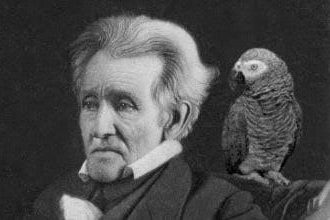
Andrew Jackson, the seventh President of the United States, is remembered for his fiery temper and aggressive political style. But what many don’t know is that Jackson had a pet parrot named Poll, who was known for its loud and colorful personality. Poll was a macaw who accompanied Jackson during his later years, and the parrot became infamous for its penchant for swearing, which Jackson himself was said to have encouraged. Jackson’s parrot had a particular fondness for cursing, much to the horror of visitors at the White House. In fact, Poll’s foul-mouthed tirades became so notorious that the bird was eventually removed from the White House before Jackson’s funeral to avoid embarrassing the family.
Jackson’s pet parrot serves as a reminder of how pets, even in the most formal of settings, can embody the quirks and eccentricities of their owners. Poll’s reputation for crude language and behavior mirrored Jackson’s own sometimes controversial personality, making the bird a perfect companion for one of the most colorful figures in American history. In the end, Poll became a symbol of Jackson’s legacy, adding a humorous, albeit chaotic, layer to his political image.
Sir Winston Churchill’s Poodle, Rufus
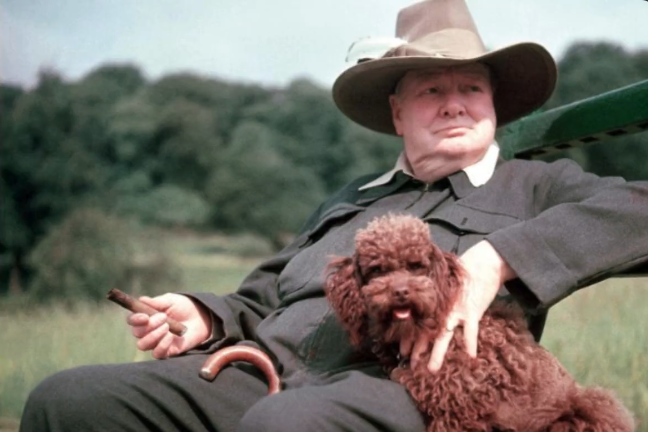
Winston Churchill, known for his leadership during World War II, is often remembered for his indomitable spirit and unwavering resolve. However, what many don’t realize is that Churchill had a beloved poodle named Rufus, who was an integral part of his daily life. Rufus was more than just a pet; he was Churchill’s confidant, accompanying the Prime Minister through some of his most stressful days. The dog’s relationship with Churchill was so strong that it’s said Rufus was present during some of the most critical moments in British wartime history, providing a sense of comfort during tumultuous times.
Rufus was a constant presence, often found by Churchill’s side in his study or accompanying him on walks. The poodle was particularly notable for its affection towards Churchill’s cigars, sometimes sneaking a puff when his owner wasn’t paying attention. This quirky behavior added a personal touch to their relationship, making it clear that Rufus wasn’t just any dog. In fact, Churchill’s affection for his poodle was so well-known that when Rufus passed away, Churchill was deeply upset, marking the loss of a friend who had been with him through thick and thin.
Albert Einstein’s Dog, “Chico”: A Genius’s Unlikely Companion
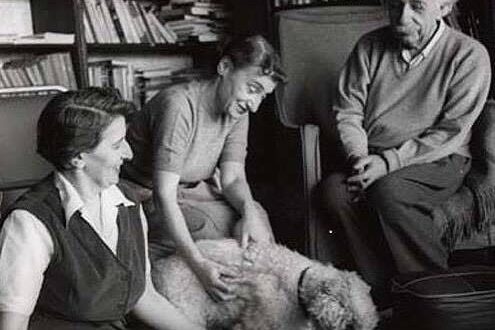
Albert Einstein, widely regarded as one of the greatest minds in history, was known for his groundbreaking theories on relativity and his contribution to the field of physics. Yet, few know that Einstein had a beloved dog named Chico, a mixed-breed dog that accompanied him during his time in the United States. Chico wasn’t just a pet; he was a loyal companion to the genius, offering comfort and companionship amidst Einstein’s demanding career. The dog was particularly close to Einstein’s family, often seen by his side during quiet moments away from the pressures of his scientific work.
Chico’s bond with Einstein was symbolic of the connection between intellect and the simple joys of life. While Einstein was famous for his abstract thoughts and philosophical musings, his love for Chico showed that even the greatest minds needed companionship in their lives. It is said that Einstein would often talk to his dog, as though Chico could understand his complex theories, demonstrating the human need for connection even in the most intellectual circles. Chico’s presence in Einstein’s life reminds us that pets can play an important role in providing emotional support, even to the most brilliant minds.
Pablo Picasso’s Dove: A Symbol of Peace in a Turbulent World
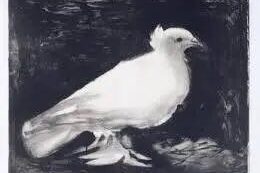
Pablo Picasso, one of the most influential artists of the 20th century, is known for his revolutionary contributions to modern art. However, not many are aware that Picasso had a deep connection with a dove named “Pandora,” which became an iconic symbol of peace during the turbulent years of World War II. The dove was much more than a pet; it was an emblem of Picasso’s own vision for a peaceful world. Picasso’s affection for the bird was evident in his art, where the dove appeared in several pieces, including his famous lithographs.
Pandora’s influence on Picasso’s life extended beyond the confines of the artist’s studio. The dove’s presence in Picasso’s works became a powerful symbol of hope and resilience during a time of global conflict. Picasso famously included the dove in his design for the 1949 World Peace Congress poster, further solidifying its role as a peace symbol. Picasso’s deep bond with the dove reflects how animals, especially pets, can shape our worldview and inspire profound creative works. In Picasso’s case, Pandora helped transform a simple pet into a global symbol of peace, showing how the relationship between humans and animals can transcend the personal and take on significant cultural meaning.
Benjamin Franklin’s Love for His Turkey, “Polly”
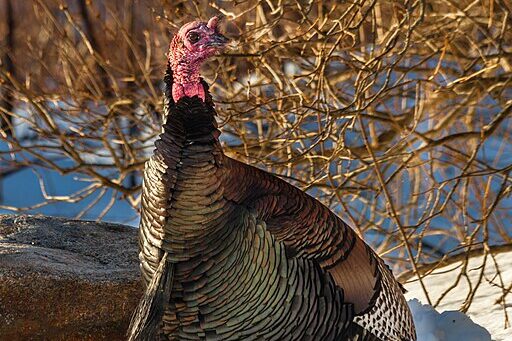
Benjamin Franklin, one of the founding fathers of the United States, is remembered for his philosophical contributions and diplomacy. But not many know about his quirky affection for a turkey named Polly. Franklin, who was known for his deep love of animals, had a particular fondness for Polly. The turkey was an unusual pet for a man of Franklin’s stature, but he kept Polly at his home in Philadelphia and reportedly treated her with great care. Franklin’s relationship with Polly was so well-known that he once joked about making the turkey the national bird of the United States instead of the bald eagle, which was later chosen for its symbolism.
While this may have been partly tongue-in-cheek, Franklin’s admiration for Polly goes beyond simple humor. He was genuinely fond of the bird, referring to her as one of his “most esteemed companions.” In letters and writings, he described her as having a “high character” and commended her intelligence. Polly’s fame even extended beyond Franklin’s household, as she was a symbol of his more playful and eccentric side, reminding us that even the most serious figures in history had their lighter moments.
Cleopatra’s Cats: Guardians of the Queen’s Power
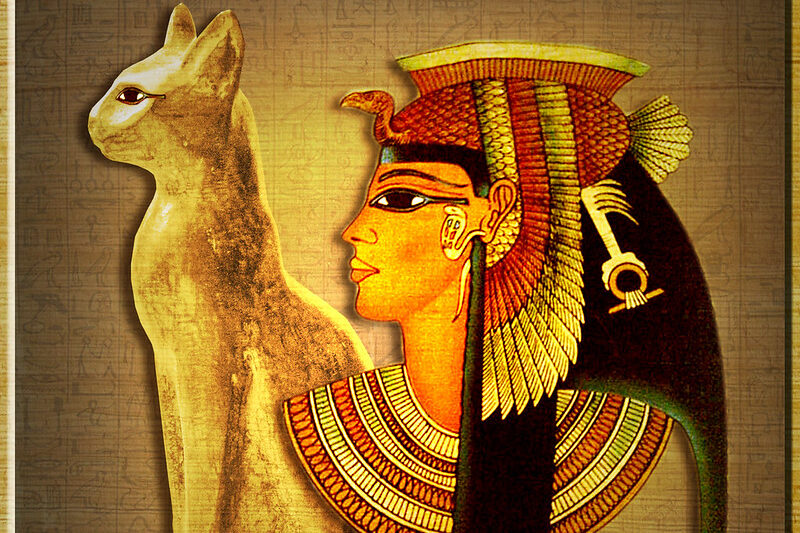
When we think of Cleopatra, the iconic queen of Egypt, images of her regal presence and intelligence come to mind. But her connection to cats, particularly her beloved pet felines, often goes unnoticed. Cleopatra was known to have several cats that were not only her companions but also played a symbolic role in her rule. Cats were revered in ancient Egypt, seen as protectors and even deities, and Cleopatra’s love for them reinforced her image as a powerful and divine ruler. It’s said that she had a particular cat who was so adored that it even accompanied her to meetings with foreign dignitaries, subtly conveying a sense of security and status.
This bond between Cleopatra and her cats wasn’t just personal — it was political. By surrounding herself with these noble creatures, she reinforced her royal image, associating herself with the ancient Egyptian goddess Bastet, the deity of home, fertility, and protector of cats. Cats in Cleopatra’s court were likely to have been seen as symbols of authority, loyalty, and independence, traits she wanted to align with herself. Though their names have been lost to history, Cleopatra’s feline companions remain a testament to the deep connections humans have had with their pets, even in the most politically charged environments.
King Charles II and His Cavalcade of Dogs
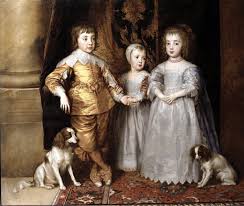
King Charles II of England, known for his lavish lifestyle and political intrigue, is often remembered for his love of dogs. His deep affection for his pets became legendary, and he is said to have owned a large number of King Charles Spaniels, which were often seen by his side during his reign. These dogs were not only companions but were also seen as symbols of nobility and grace. The King’s obsession with these dogs was so great that he would often be seen strolling through the streets with a pack of them, much to the delight of his subjects.
Charles’ love for his dogs went beyond mere companionship. He was known to give them the best food and luxury, treating them with the utmost care and devotion. The King’s affection for his spaniels was reflected in the breed’s name, as the King’s reign popularized them. Even after his death, King Charles Spaniels continued to be a symbol of royal favor, and they remain a cherished breed to this day. The King’s enduring legacy is not just in his political accomplishments, but in his impact on the canine world, as his dogs left an indelible mark on history.
Marie Antoinette’s Pomeranians: The Queen’s Fashionable Companions
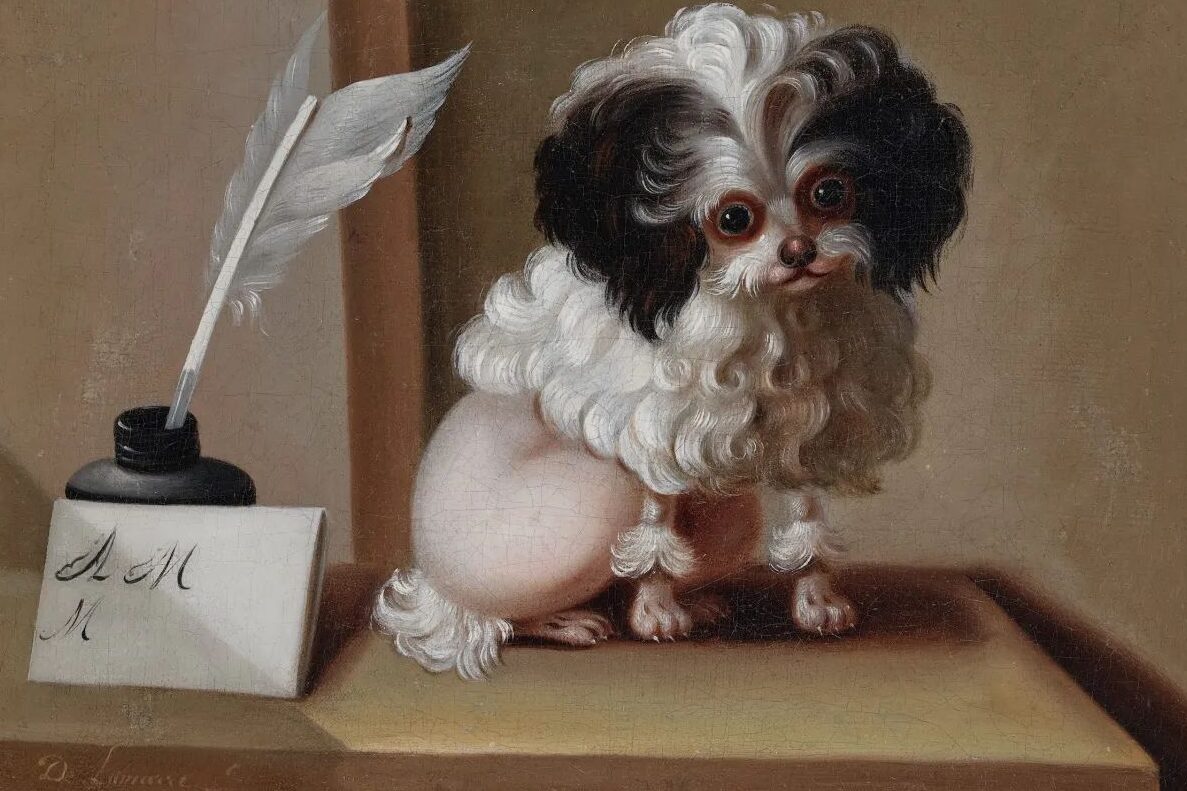
Marie Antoinette, the last queen of France before the revolution, is often remembered for her extravagant lifestyle and lavish tastes. What many don’t realize, however, is that she was also an avid animal lover, particularly fond of her Pomeranians. These tiny dogs were often seen by the queen’s side, dressed in royal garb that complemented her own opulent attire. Pomeranians were a popular breed in the royal courts of Europe, but Marie Antoinette’s love for them was unparalleled. She had several Pomeranians, and they were frequently seen at her court in Versailles, where they became symbols of the queen’s elegance and style.
Marie Antoinette’s Pomeranians weren’t just pets; they were accessories that highlighted her status and position within the court. Her connection to her dogs was so strong that, upon her death, she was said to have been deeply mourned by her canine companions. They, like many of her other possessions, were seen as part of her personal identity and royal persona. Today, Pomeranians are still associated with royalty, largely due to their close connection to one of history’s most famous queens, making Marie Antoinette’s dogs a lasting symbol of royal love and luxury.
The Empress of Russia’s Horses: A Royal Obsession
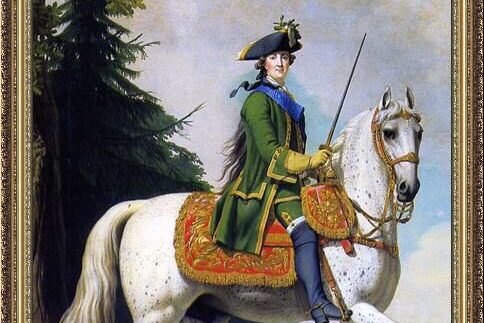
Catherine the Great, the Empress of Russia, is remembered for her contributions to the arts and her political astuteness. However, what is often overlooked in discussions about her reign is her intense passion for horses. Catherine had several horses throughout her life, but the most famous was a horse named “Phaeton,” which she used during her royal tours. Phaeton was more than just a means of transportation; it was a symbol of Catherine’s imperial power and grace, and the bond between the two became legendary.
Catherine’s love for horses was not just a personal indulgence but also an expression of her political ambitions. Horses were an important status symbol in the Russian court, and Catherine’s collection of steeds was said to rival the finest royal stables in Europe. Her obsession with these animals reflected her desire to be seen as a powerful, yet elegant ruler. Catherine’s horses were a part of her image, and their care and attention were integral to her public persona. She even created a royal horse breeding program, leaving behind a lasting legacy that would influence Russian aristocracy for generations.


